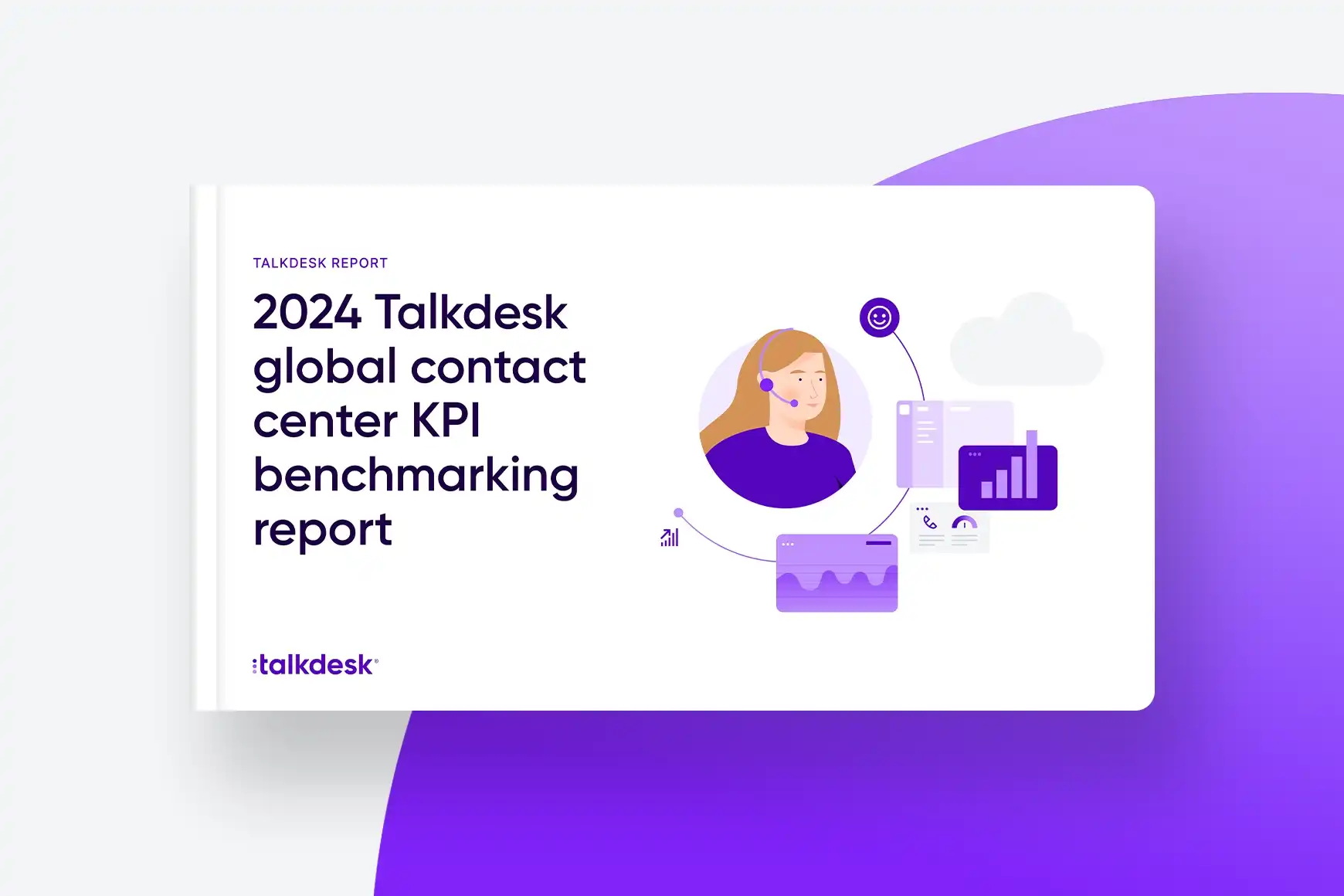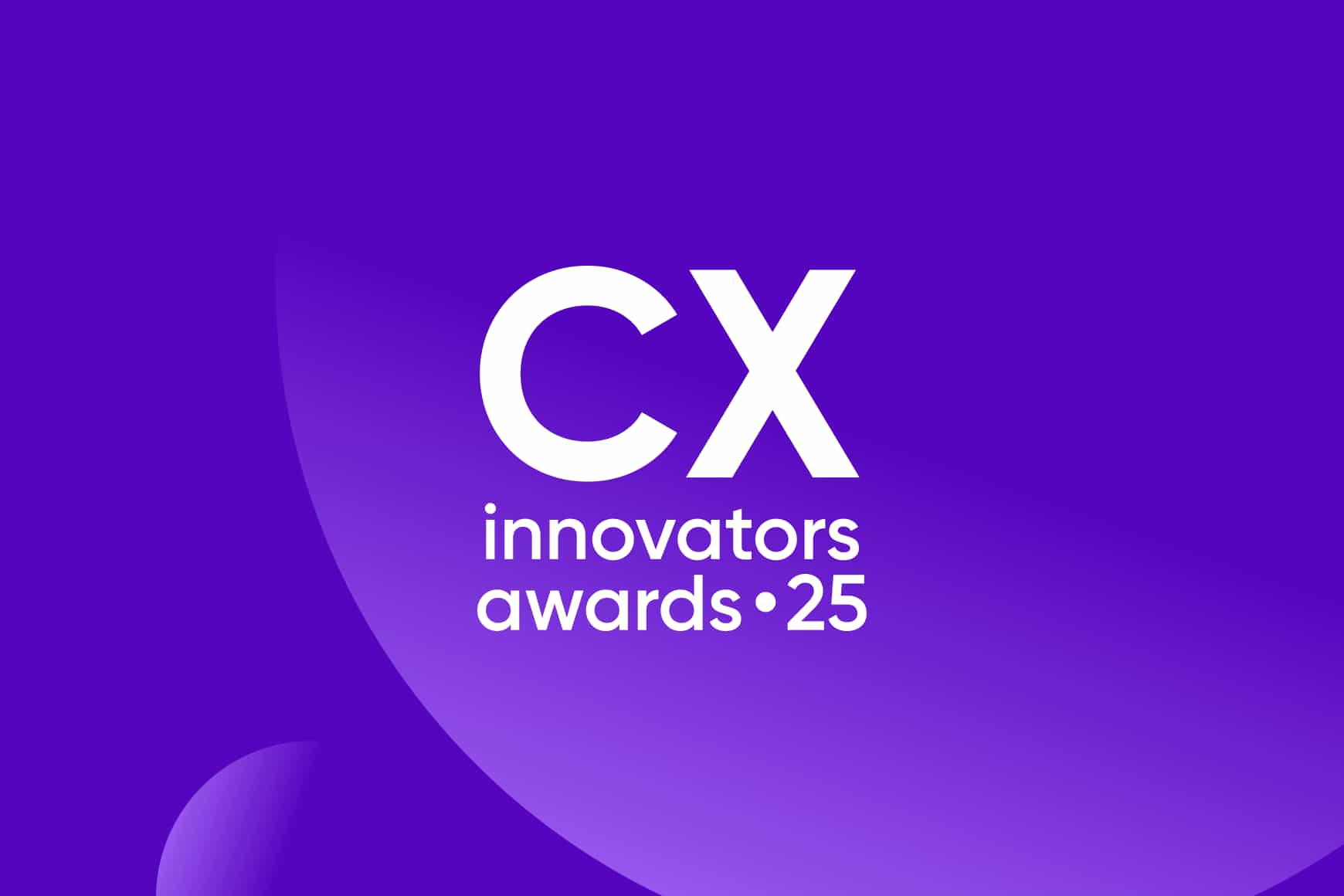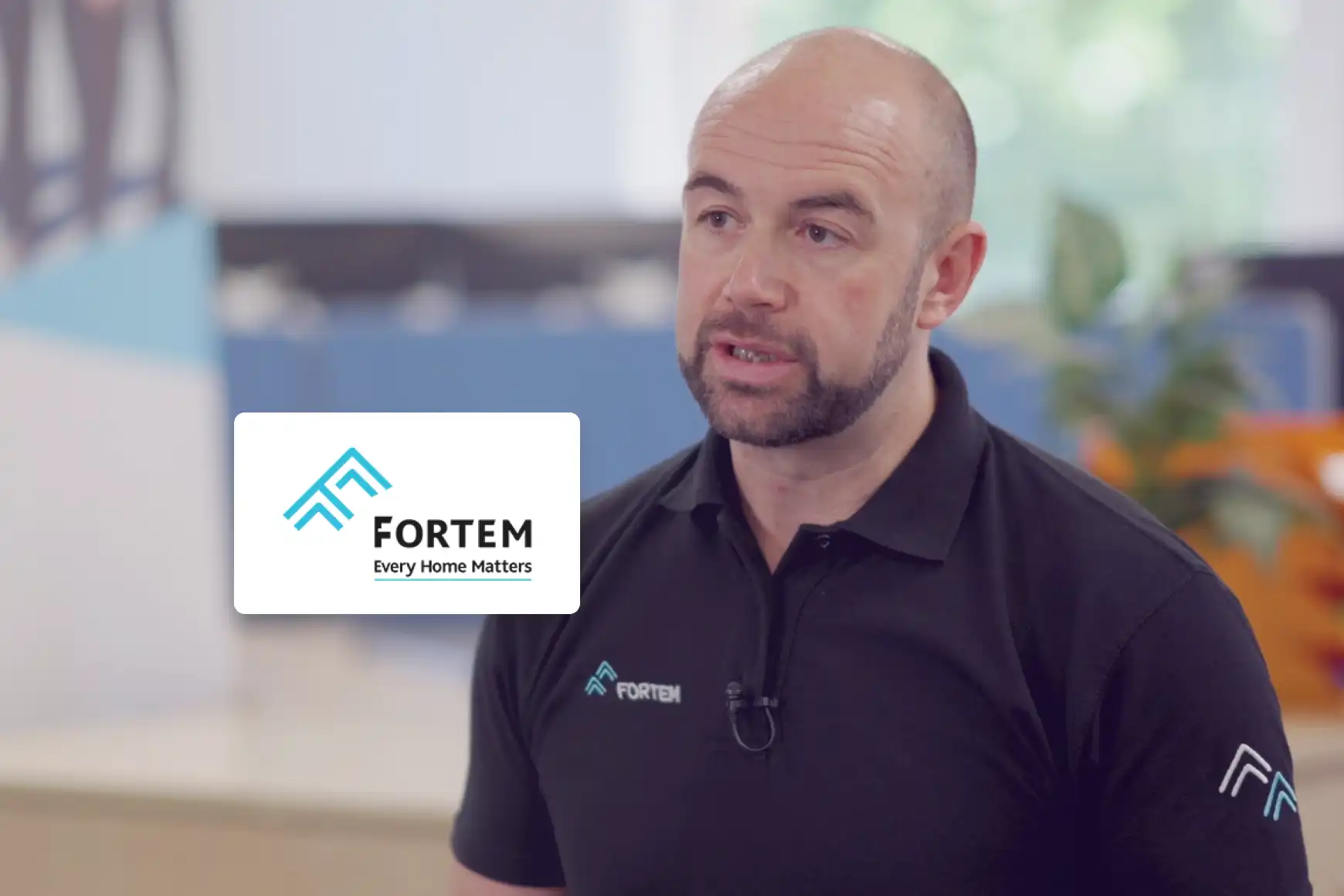6 effective strategies to improve customer loyalty

By Celia Cerdeira
0 min read

Customer loyalty is one of a company’s most valuable assets. Not only do loyal customers contribute to revenue growth, but they can also become advocates for a brand, spreading positive word of mouth that leads to even more business. Customer loyalty can elevate every KPI that a company tracks, such as customer satisfaction scores, net promoter scores, customer effort scores, and more.
However, customer loyalty is difficult to earn and even easier to lose. In fact, 49% of consumers say they’ve stopped working with a company due to one poor customer service experience.
Where should a company start to improve customer loyalty? According to 91% of customer experience (CX) professionals, contact centers are the driving force behind loyalty. This article will identify and explain six effective contact center strategies for improving customer loyalty.
What are the most effective strategies for how to increase customer loyalty?
Improving customer loyalty is essential for building lasting relationships and driving long-term success. Thoughtful engagement strategies enable businesses to create deeper connections and increase retention.
Here are six strategies to increase customer loyalty, ensuring that customers not only return but also become brand advocates:
1. Use human input to make AI more effective.
Everyone wants a human touch—and it’s no different when it comes to the customer experience. While automation and artificial intelligence (AI) have transformed efficiency, there’s nothing quite like the empathy and understanding that come from human interactions. In fact, 61% of consumers say humans understand their needs better than AI.
Human-in-the-loop AI technology enables agents with non-technical roles to help train AI models, allowing the technology to continually improve based on real data from customer interactions. Human-in-the-loop allows businesses to refine the customer experience over time, creating an optimal balance between the speed and accuracy of AI and the warmth and intuition of human interaction.
2. Help more customers help themselves.
Companies can also use generative artificial intelligence to offer customers a seamless digital self-service experience. AI-driven tools like chatbots, virtual assistants, voice bots, and automated knowledge bases give customers quick and accurate support 24/7.
Instead of speaking with a customer service representative, customers can resolve simple concerns, questions, or challenges on their own. These tools can generate responses to frequently asked questions, provide step-by-step troubleshooting, and guide customers through common issues without the need for human intervention, resulting in faster resolutions and happier customers.
However, self-service tools don’t just impact customers. They also free agents to handle more complex issues instead of losing time in repetitive, mechanical tasks. This shift allows agents to provide higher-value support, resulting in faster resolution times for complex problems and improving overall service quality. This leads to a stronger sense of trust and reliability, which in turn fosters long-term customer loyalty.
3. Improve the customer journey with data-driven insights.
Customer experience analytics provides useful insight into KPIs, allowing managers to quickly spot trends, address issues in real-time, and continuously improve the customer experience. With AI tools, managers can even analyze interactions to uncover intent and sentiment patterns, which can help them make proactive, targeted improvements to the customer journey. Analytics also provides managers with insight into agent performance, allowing them to identify coaching opportunities.
4. Route customers directly to the most qualified agent.
Regardless of which channel customers use to reach out to a brand, one thing remains constant: they want to immediately speak with an agent who is fully qualified to handle their concerns. They expect swift and effective solutions—and the key to meeting customers’ expectations lies in intelligent routing.
When customers reach out via a phone call, companies can use intelligent call routing to automatically route calls according to predefined rules. These rules can be based on factors like the customer’s issue, previous interactions, or even their location, ensuring they are quickly connected to an agent who can address their specific needs.
Not only does intelligent call routing speed up the resolution process, but it also reduces customer frustration by minimizing unnecessary transfers and hold times. By streamlining these interactions, companies can create a more efficient and satisfying experience, which can directly impact customer loyalty.
The best contact center solutions go a step further and are capable of intelligently routing digital connections to the right topic, language, or help information. Whether a customer reaches out via chat, email, or social media, advanced AI-driven systems analyze the content of the inquiry and automatically route it to the most appropriate resource.
This ensures that customers receive consistent, high-quality support across all channels, which is crucial for maintaining a seamless omnichannel experience and helps increase customer satisfaction and loyalty.
5. Let customers connect with brands across the channels they prefer.
Interacting solely through phone calls won’t cut it anymore. Customers deserve and expect convenience when communicating with brands.
Companies need to be ready to engage with customers on their terms across a variety of channels—whether it’s phone calls, SMS, social media chat, or email. An omnichannel approach gives companies accessibility, responsiveness, and the capability to deliver a seamless experience across every touchpoint.
An omnichannel strategy allows companies to avoid the potential frustration of limited communication channels.
A user-friendly omnichannel solution that allows businesses to manage these interactions from a single pane of glass is essential for streamlining operations. A unified view ensures that agents have all the relevant customer information at their fingertips, enabling quicker, accurate responses.
6. Collect customer feedback.
Too often, companies attempt to satisfy customers without actually asking those customers about their needs. Surveys give companies powerful insights into important information, such as customer needs and satisfaction levels.
Customer satisfaction (CSAT) surveys can provide detailed, actionable feedback on what’s working and where improvements are needed. By directly asking customers what changes they’d like to see, companies can focus their efforts on areas that matter most to their audience rather than making assumptions.
Companies can distribute surveys using several different templates to see which generates the most insightful responses from customers. Net Promoter Score survey templates prompt the respondents to share how likely they are to recommend the company to a friend or colleague, while customer effort score templates dive into how easily customers solve their problems. On the other hand, open-ended survey questions allow customers to give more detailed feedback.
Companies must include the right questions in their surveys to solicit actionable feedback. Questions worth asking include:
-
On a scale of 0 to 10, how likely are you to recommend our company to a friend or colleague?
-
What could we do to improve your likelihood of recommending us?
-
How would you rate the ease of use of our product/service?
-
How would you rate your satisfaction with our customer service team?
-
What did you like most about your experience with us?
-
If you could change one thing about our product/service, what would it be?
Regardless of how feedback is collected or which questions are asked, acting on the insights gained from these surveys is critical. When customers see that their feedback leads to tangible changes, it reinforces their trust in the brand and strengthens loyalty.
Which KPIs are most important to track for customer loyalty?
To measure customer experience in a contact center, organizations need to pay attention to key performance indicators(KPIs) to proactively identify areas for improvement, optimize customer service operations, and enhance the overall customer experience.

TALKDESK REPORT
Talkdesk 2024 KPI benchmarking report for contact centers
Get a snapshot of your contact center’s performance in the age of generative AI, see how it compares to industry peers, and discover tips for optimization.
The most important KPIs to track include:
First contact resolution (FCR).
First contact resolution tells an organization how many customer issues are resolved in the first interaction. High FCR rates indicate that customers are able to quickly resolve their issues and that the contact center’s agents are operating efficiently and have the right training, tools, and information needed to resolve problems.
Customer lifetime value (CLV).
CLV is a critical KPI that measures the total revenue a customer is expected to generate for a company over the entire course of their relationship. CLV helps companies understand the long-term financial impact of customer loyalty.
More specifically, CLV can give businesses a better idea of which customer segments will be the most valuable, enabling them to formulate or adjust retention strategies accordingly. Businesses can increase CLV by improving the overall customer experience through quick issue resolution, personalized support, and an omnichannel approach.
Loyal customers are more likely to bring additional business, recommend the brand to others, and continue their engagement ultimately driving higher revenue and profitability.
Customer effort score (CES).
Customer effort score (CES) represents how easily customers can interact with a company, whether they are resolving an issue or finding specific information. Low scores indicate that customers can quickly and effortlessly get what they need, while high scores indicate that customers need to put in more effort, which can result in frustration and diminished loyalty.
By tracking CES, organizations can more easily discover areas where there is room for improvement and make targeted changes to reduce friction in customer interactions, improve engagement, and increase customer loyalty.
Customer satisfaction score (CSAT).
A company’s customer satisfaction score (CSAT) rates customer satisfaction levels for a specific interaction or service. CSAT surveys are generally administered via email, mail, text, or phone and can tell companies how well they are meeting customer expectations.
A high CSAT score indicates that customers are pleased with their interaction or service, while a low score highlights areas for improvement. This metric provides immediate, actionable feedback, enabling companies to quickly address pain points and improve customer service.
Net promoter score (NPS).
Net promoter score (NPS) can give companies some insight into customer loyalty and advocacy. By asking customers how likely they are to recommend the company to a friend or colleague, companies can classify their customers as detractors, passives, or promoters.
Average handle time (AHT).
Average handle time, or the average amount of time an agent spends per customer interaction, can shed some light on individual agent and team performance.
However, it’s important to strike a balance between speed and quality. While shorter handle times can indicate efficiency, rushing through interactions to reduce AHT can lead to unresolved issues and dissatisfied customers. Therefore, companies should focus on reducing AHT without sacrificing the quality of service.
Agent turnover rate.
While the percentage of agents who leave an employer within a specific timeframe may not seem directly related to the customer experience and, by extension, customer loyalty, it does have a major impact on the overall quality of service delivered.
A high agent turnover rate can lead to inconsistent customer experiences, as new or less experienced agents may take longer to resolve issues or lack the knowledge of more seasoned agents. This inconsistency can result in longer wait times, lower first contact resolution rates, and a decline in customer satisfaction.
Average wait time.
The average wait time is a measurement of how long customers need to wait before connecting with an agent. Long average wait times can lead to frustrated customers that leave the queue altogether, contributing to a higher abandonment rate.
To reduce average wait times, companies can implement strategies like staffing contact centers appropriately during peak hours, or offering self-service options like AI-powered chatbots or virtual agents to allow customers to resolve issues quickly on their own.
Efficient call routing and prioritization systems can also ensure that customers are connected to the right agent more quickly, reducing time spent in the queue.
Average abandonment rate.
This KPI measures the percentage of customers who leave the queue before connecting with an agent. A high abandonment rate indicates that customers are becoming frustrated with long wait times or poor service availability and are choosing to end their interaction before receiving help.
This can lead to a negative perception of the brand and decreased customer satisfaction and loyalty. High average abandonment rates may mean that the company has some major underlying issues, including inefficient processes, an insufficient workforce, or long wait times.
Reducing the abandonment rate is essential for maintaining customer trust and increasing customer loyalty—and it can be done by improving staffing levels during peak times, optimizing call routing systems, and providing alternative communication channels like self-service options.
Occupancy rate.
A company’s occupancy rate represents the time a contact center agent spends either communicating directly with customers or working on related tasks like documentation or follow-up, as opposed to being idle. So, a high occupancy rate indicates that agents are consistently engaged with productive work, either by assisting customers or handling essential post-interaction tasks.
While maximizing agent productivity is important, an excessively high occupancy rate can lead to agent burnout, reduced quality of service, and higher turnover all of which negatively impact the customer experience.
Instead, it’s best to aim for a reasonable occupancy rate that keeps agents engaged but also provides them with enough downtime to recharge, maintain high service quality, and deliver personalized, thoughtful interactions.
Customer service level (CSL).
Customer service level measures a company’s accessibility and is closely related to quality of service, customer satisfaction, and loyalty. After all, if customers can’t easily reach a company when they need assistance, their frustration levels will rise, and their overall satisfaction with the brand will decline.
A high customer service level indicates that customers are able to connect with support quickly and efficiently, whether it’s through a phone call answered within seconds or a chat message responded to in real time. This ease of access and quick resolution can significantly boost customer satisfaction, as it shows that the company values the customer’s time and is committed to addressing their needs promptly.
Learn how to improve customer loyalty with Talkdesk.
Improving customer loyalty requires a well-rounded approach that focuses on giving customers a seamless experience across multiple channels.
Customers should be able to help themselves, but when they need assistance, agents must be equipped with the right information and tools to resolve issues quickly and efficiently—and that means using a powerful, flexible solution.
Talkdesk offers a cloud contact center solution for organizations looking to streamline operations, save time, increase agent efficiency, and ultimately enhance customer loyalty. By providing agents with a unified platform that integrates customer data across all channels, Talkdesk ensures that agents have full visibility into each customer’s journey and can provide personalized, context-driven interactions that turn customers into loyal brand advocates.
Ready to provide the best possible customer experience and increase customer loyalty? See Talkdesk in action by submitting a demo request.
FAQs.
Customer loyalty is when customers keep coming back to a brand because they trust it, love the experience, and feel they’re getting real value. Loyal customers are the ones who choose your brand over others, share positive reviews, and recommend you to friends and family. They stick around because they feel appreciated and know they can count on you for great products or services. By offering consistent quality, personalized experiences, and great customer service, businesses can turn one-time buyers into lifelong fans.
Measuring customer loyalty is crucial because it helps businesses understand how well they’re retaining customers and fostering long-term relationships. Loyal customers contribute to steady revenue, positive brand reputation, and lower acquisition costs.
To track loyalty, companies should focus on key performance indicators (KPIs) like customer lifetime value (CLV), which measures the total revenue a customer generates over time, customer satisfaction score (CSAT), reflecting how satisfied customers are with their experience, and first contact resolution (FCR), which shows how effectively issues are resolved on the first interaction.
Customer loyalty is crucial for businesses because retaining existing customers is significantly more cost-effective than acquiring new ones. Studies indicate that acquiring a new customer can cost up to seven times more than retaining an existing one.
Loyal customers also contribute to steady revenue streams, advocate for the brand, and are more likely to try new products or services. Tracking customer loyalty is also critical for gaining a complete picture of company health. Metrics like customer loyalty complement other key indicators such as customer experience and customer satisfaction, providing insights into overall performance.








